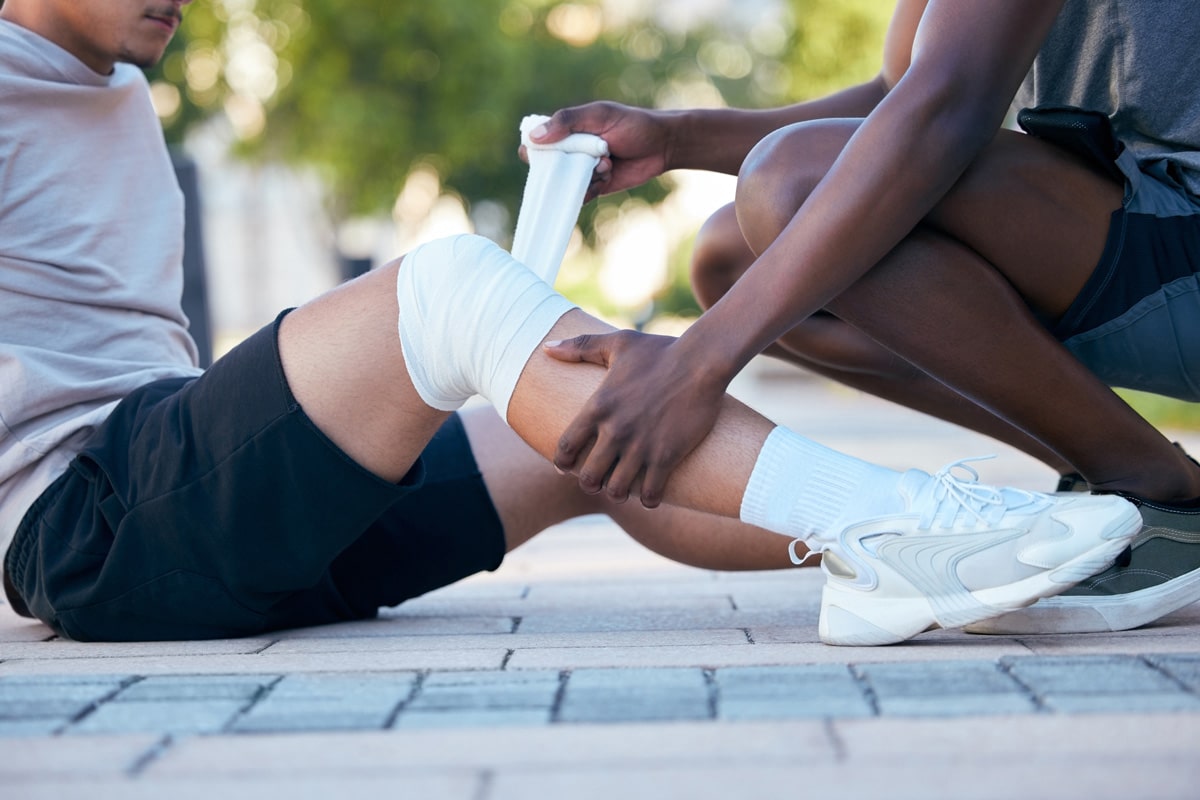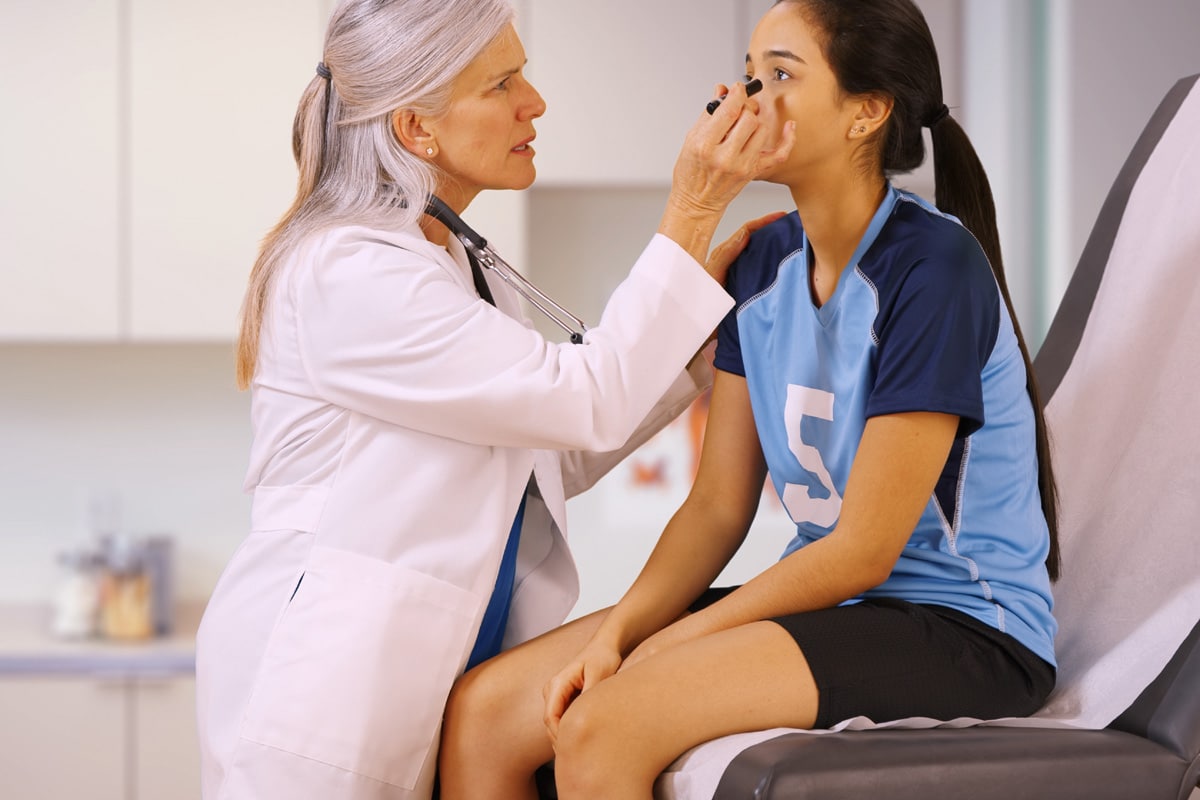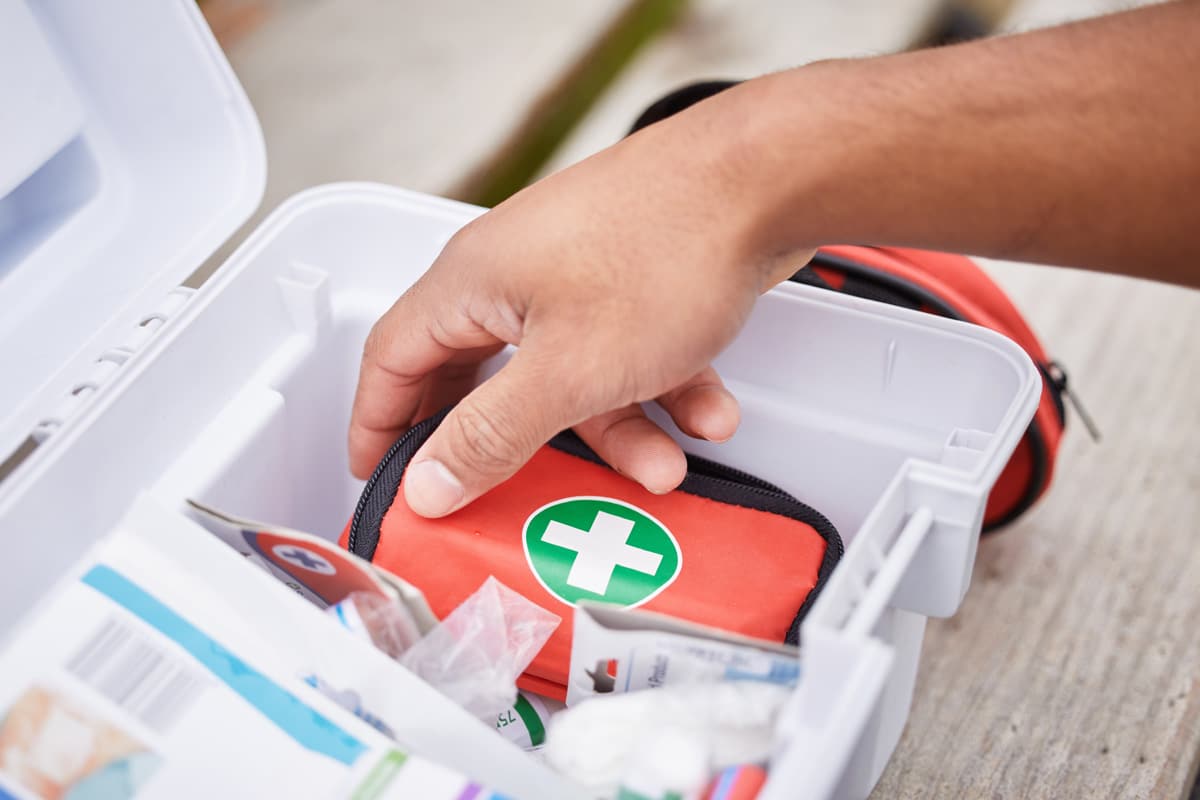In the realm of sports and physical activities, injuries are, unfortunately, a common occurrence. The immediate response to these injuries, often termed as ‘First Aid’, is crucial in determining the impact and recovery time for these injuries. From sprains and strains to fractures and dislocations, the requirements of first aid vary significantly. This discussion aims to provide an in-depth understanding of immediate first aid measures for varying sports injuries. The question we aim to answer is, how can prompt and effective first aid procedures alter the recovery trajectory of an athlete?
Understanding Common Sports Injuries
In order to properly manage and prevent sports injuries, it’s crucial to first grasp the nature and common occurrence of various injuries in the realm of sports. Understanding the types and mechanisms of sports injuries can significantly contribute to formulating effective injury prevention strategies. Research has shown that strains, sprains and fractures are some of the most common types of injuries in sports, frequently resulting from overuse, improper training practices, or insufficient warm-up and stretching.
Implementing injury prevention strategies is key to reducing the risk of these common injuries. These strategies may include proper warm-up and cool-down routines, regular strength and flexibility training, and the use of appropriate safety equipment. Adequate rest and recovery periods are also essential to prevent overtraining and the subsequent risk of injury.
In addition, understanding athlete nutrition basics is also pivotal in preventing sports injuries. A balanced diet, rich in essential nutrients, can support overall health, boost athletic performance, and aid in injury prevention. Athletes should aim to consume a variety of foods, including carbohydrates for energy, proteins for muscle repair and growth, and fats for prolonged endurance activities. Proper hydration is also vital in maintaining good health and preventing injuries.
The Importance of Quick Response
While preventative measures certainly play a crucial role, the promptness and effectiveness of first aid response to sports injuries can significantly determine the severity of the injury and the athlete’s recovery time. Swift action is paramount to minimize the physical and psychological impact of the injury, and it can also reduce the risk of long-term damage.
Emergency Preparedness is a fundamental aspect of this quick response. It involves having a well-defined action plan, properly trained personnel, and readily accessible first aid equipment. The plan should detail the steps to take following an injury, including who to contact, how to assess the situation, and the immediate actions required to stabilize the injured athlete.
Injury Prevention also plays a significant role in this context. While prevention focuses on avoiding injuries, it also encompasses preparing for those instances when injuries do occur. This includes educating athletes and coaches about recognizing injury symptoms and administering immediate first aid.
First Aid Essentials in Your Kit
Equipped with the right tools, a well-stocked first aid kit stands as a vital component in promptly addressing sports-related injuries. This is where the importance of kit organization comes in. A well-organized kit ensures that emergency items are readily accessible, enabling you to provide immediate and effective first aid.
A comprehensive first aid kit for sports should include:
- Bandages and Dressings: These are necessary for covering wounds, preventing infection, and managing bleeding. Include different sizes and types.
- Splints and Straps: These can provide support for injured limbs and joints, and assist in immobilizing suspected fractures.
- Antiseptic Wipes and Creams: These help clean open wounds and protect against infection.
- Essential Medications: Include over-the-counter pain relievers, antihistamines for allergic reactions, and any sport-specific medications.
Each item plays a crucial role in the initial treatment of sports injuries. Efficient kit organization ensures that these emergency items are easily accessible during critical moments. Regularly check and replenish your kit to maintain its readiness. Remember, prompt and proper first aid can significantly influence the outcome of sports injuries.
Steps to Handle Sprains and Strains
When faced with sprains and strains during a sports activity, there are specific steps you can take to effectively manage and treat these common injuries. The first step, often referred to as RICE (Rest, Ice, Compression, and Elevation), is crucial. Rest the injured area, apply ice to reduce swelling, use a bandage for compression, and elevate the injury above heart level to minimize inflammation.
Prevention Measures are critical in avoiding recurring injuries. Regular conditioning and strength training exercises can help strengthen the muscles surrounding the susceptible areas. Using proper equipment and maintaining good form during sports activities is also essential.
When it comes to Rehabilitation Techniques, these are vital for full recovery. Gradual reintroduction of movement and strength exercises can help restore function. It’s crucial to start slow and increase intensity progressively to prevent further damage. Physiotherapy may be recommended for severe sprains and strains.
Dealing With Fractures and Dislocations
In the realm of sports injuries, fractures and dislocations represent significant cases that demand immediate and effective response. The ability to correctly identify these injuries is paramount, followed by the application of appropriate immediate care strategies. This segment will address these crucial aspects, underscoring the importance of informed intervention in such scenarios.
Identifying Fractures and Dislocations
A sportsperson’s worst nightmare, fractures and dislocations, require immediate identification and proper management to prevent long-term complications. Fracture prevention and bone health are crucial elements in sports medicine.
Identifying fractures and dislocations involves a keen understanding of the following signs:
- Pain: The affected area often experiences intense, sharp pain.
- Swelling or Bruising: This is usually immediate and significant, especially in the case of fractures.
- Deformity: A visible change in the normal shape or alignment of a bone suggests a possible dislocation or fracture.
- Difficulty in Movement: If the athlete cannot move the affected part normally, it may indicate a serious injury.
Recognizing these signs early can facilitate immediate intervention, potentially reducing the risk of further injury.
Immediate Fracture Management
Having recognized the signs of fractures and dislocations, the next crucial step is to provide immediate and effective management to the injured athlete. The primary goal is to stabilize the injury, minimizing further damage and reducing pain. Pain management, often through medication, is a critical part of this process.
Casting techniques also play a significant role in fracture management. Utilizing proper casting techniques not only immobilizes the injury but also aids in the recovery process by maintaining alignment and promoting healing.

Managing Cuts and Abrasions
In the realm of sports injuries, managing cuts and abrasions is an essential skill. This involves a series of steps including thorough cleaning of the wound, using the pressure technique to stem bleeding, and careful bandaging. The aftercare of the wound is equally important to prevent infection and promote healing.
Cleaning Wound Properly
When treating sports injuries, particularly cuts and abrasions, the first step is to ensure the wound is thoroughly cleaned to prevent infection. This is crucial for wound infection prevention and to mitigate the risk of Tetanus.
- First, prepare the wound for cleaning by removing any debris or dirt with a pair of tweezers cleaned with alcohol. Be careful not to push any particles further into the wound.
- Second, rinse the wound under running water. Avoid using soap within the wound as it can cause irritation.
- Next, apply a mild antiseptic to the wound. This will help prevent bacteria from developing and causing an infection.
- Lastly, pat the wound dry gently using a sterile dressing or clean cloth. Never rub the wound, as it can cause further damage or irritation.
Applying Pressure Technique
After ensuring the wound is clean, the next critical step in managing cuts and abrasions is to apply appropriate pressure to control any bleeding. This technique, often referred to as pressure points identification, involves locating the nearest artery to the wound and firmly pressing on it to reduce blood flow. This may be a temporary measure to control bleeding while waiting for emergency help.
In more severe cases, tourniquet application may be necessary. This method should be used with caution, as it can lead to complications if not done correctly. A tourniquet is placed above the wound and tightened until bleeding stops. It’s essential to regularly check the wound to ensure the tourniquet is not causing additional harm.
Bandaging and Aftercare
Having applied pressure to control bleeding, the next crucial step involves bandaging the wound to protect it from further injury and infection. There are several types of bandages and wound dressings available, each tailored for specific injuries.
- Adhesive Bandages: Ideal for small cuts or abrasions, they provide a protective barrier against bacteria and debris.
- Gauze Bandages: These are used for larger wounds, providing absorption for wound exudate, and allowing air circulation.
- Compression Bandages: They are used to reduce swelling and provide support to injured areas.
- Hydrogel Dressings: These promote a moist healing environment, perfect for burns or large surface abrasions.
Subsequent aftercare is critical, and includes regular dressing changes, wound cleaning, and monitoring for signs of infection.
Responding to Head Injuries
In the realm of sports, head injuries are a significant concern, necessitating immediate and appropriate first aid response. Despite the best efforts in concussion prevention, such injuries can still occur. The fundamental step in managing a head injury is to assess the athlete’s consciousness and responsiveness. In case of unconsciousness, call for emergency medical help immediately.
Helmet safety is paramount, as it can significantly reduce the severity of head injuries. Athletes should always wear properly fitted helmets that meet the safety standards of their respective sports. In the event of a suspected concussion, remove the athlete from play to prevent further damage and assess for signs such as confusion, dizziness, or loss of balance.
The key to effective head injury management is rapid recognition and appropriate response. It’s crucial to educate sports professionals and athletes about the potential consequences of head injuries and the importance of immediate medical attention. Remember, when it comes to head injuries, “when in doubt, sit them out.” It’s better to miss one game than to risk a lifetime of potential health issues.
Immediate Care for Heat Exhaustion
The immediate and effective response to heat exhaustion is a critical aspect of sports injury first aid. To ensure swift recovery, it’s essential to recognize the signs of this condition, initiate cooling techniques, and understand the importance of proper hydration. We will cover these areas in detail to provide a comprehensive guide on handling heat exhaustion incidents.
Recognizing Heat Exhaustion Signs
A significant number of sports-related injuries are due to heat exhaustion, a condition identified by specific signs that require immediate attention and care. Heat exhaustion can often be prevented with careful hydration schedules and appropriate sunscreen usage. However, if prevention strategies fail and heat exhaustion occurs, it’s important to recognize the signs early.
- Excessive Sweating: The body tries to cool itself down, resulting in profuse sweating.
- Pale Skin: The skin may become pale, cool, and moist to touch.
- Rapid Heartbeat: The heart rate may increase to compensate for the decreased blood pressure.
- Nausea or Vomiting: These symptoms indicate the body’s struggle to regulate its temperature.
Recognizing these signs and responding promptly can help prevent further complications.
Essential Cooling Techniques
Once heat exhaustion signs are identified, immediate implementation of essential cooling techniques can markedly reduce the risk of further complications. The cooling duration is crucial; rapid cooling within the first 30 minutes can significantly prevent the progression into a heat stroke. Ice application methods vary, but one effective approach involves applying ice packs to the body’s heat-dissipating areas, such as the neck, armpits, and groin. Alternatively, immersion in an ice bath can quickly lower the body’s core temperature. For athletes in the field, utilizing cooling vests or towels can also be beneficial. It’s important to monitor the individual’s response to these techniques, ensuring they do not become overly chilled, and to seek further medical attention if symptoms persist.
Hydration and Recovery Tips
Proper hydration and targeted recovery strategies play a paramount role in providing immediate care for heat exhaustion in athletes. Recognizing the Fluid Intake Importance, athletes must prioritize hydration for optimal performance and recovery. Here are four key hydration and recovery tips:
- Rehydrate immediately after exertion. This replenishes lost fluids and aids in cooling the body.
- Monitor urine color as an indicator of hydration levels. Pale yellow signifies proper hydration.
- Understand the Recovery Nutrition Tips. Consuming a balanced diet rich in proteins, carbohydrates, and essential fats is crucial.
- Use electrolyte-rich drinks to help replace minerals lost through sweat.
Implementing these strategies can effectively manage heat exhaustion, ensuring athletes’ well-being and their ability to return to action swiftly.
Handling Dehydration and Cramps
In the realm of sports, effectively managing dehydration and cramps is crucial for maintaining peak performance and preventing serious health complications. Maintaining electrolyte balance is central to this management process. Electrolytes, such as sodium, potassium, and calcium, help regulate nerve and muscle function, body’s hydration, blood pH, and rebuilding damaged tissue. When the body is dehydrated due to strenuous physical activity, these electrolytes can become imbalanced, leading to muscle cramps and diminished performance.
Hydration techniques are fundamental in preventing and treating dehydration. Drinking sufficient water before, during, and after physical activity is essential. However, when the body is significantly dehydrated, simply drinking water may not be enough. Sports drinks containing electrolytes can help replenish those lost through sweat and help maintain hydration.
When dehydration or cramps occur during activity, immediate steps should include pausing activity, moving to a cool environment, and rehydrating. If symptoms persist or worsen, medical attention should be sought. Remember, prevention is always the best strategy. Regular hydration, balanced nutrition, and appropriate rest can significantly reduce the risk of dehydration and cramps.

Procedure for Eye and Nose Injuries
Tackling eye and nose injuries in sports requires a clear understanding of the necessary first aid procedures to prevent further damage and expedite recovery. The importance of protective gear cannot be overstated, as it often provides the first line of defense against such injuries.
Here are four essential steps to follow when treating eye and nose injuries:
- Protection: The first step involves securing the area and minimizing further damage. Protective gear plays a crucial role, acting as a buffer between the injury and external factors that may worsen the condition.
- Assessment: Next, evaluate the severity of the injury. This step determines the subsequent course of action, whether it is immediate medical attention or simple first aid.
- First Aid: If the injury is minor, administer first aid. For eye injuries, use vision restoration techniques such as flushing the eye with water. In the case of nose injuries, staunch any bleeding and ensure clear airways.
- Professional Help: If the injury seems severe, seek immediate professional help. Do not attempt to handle severe injuries on your own, as this can lead to long-term damage.
Treating Shock in Sports Injuries
Beyond managing localized injuries such as those to the eye and nose, it is crucial to understand how to treat shock, a potentially life-threatening condition that can occur in sports injuries. The onset of shock can be sudden and if left untreated, can rapidly deteriorate an athlete’s condition.
Shock prevention is the first step in managing such conditions. This may include ensuring the individual is warm, resting comfortably, and maintaining an open airway. If possible, the injured person should be laid flat, with their legs raised to improve blood flow.
Following the initial response, monitoring the individual is essential to observe any changes in their condition. Vital signs such as pulse, breathing rate, and consciousness level should be checked regularly. The recovery timeline can vary based on the severity of the injury and the individual’s overall health.
Administering appropriate first aid for shock can stabilize the individual until professional medical help is available, potentially saving their life. Remember, shock can occur even with minor injuries. Therefore, it is crucial to be prepared and knowledgeable about its signs and treatment in the context of sports injuries.
When to Seek Professional Help
Recognizing when to seek professional medical assistance is a critical aspect of sports injury management. The severity and type of injury, the athlete’s medical history, and insurance considerations can all influence this decision. The medical referral process should be initiated promptly in cases of serious injury to ensure optimal recovery and minimize further complications.
There are several key signs to be aware of, which may indicate the need for professional help:
- Persistent or increasing pain: If pain does not subside with rest and over-the-counter pain medication, it may be a sign of a more serious injury.
- Limited mobility: Difficulty or inability to move a limb or joint can indicate a significant injury requiring medical attention.
- Visible deformities: Any abnormal positioning or shape of a body part post-injury needs immediate professional intervention.
- Inability to bear weight: If the injured individual cannot put weight on a limb, or feels faint, dizzy, or experiences rapid heartbeat, it may be a sign of a severe injury.
Frequently Asked Questions
How Can I Prevent Sports Injuries From Happening in the First Place?
Preventing sports injuries primarily involves participation in Injury Awareness Programs and consistent Protective Equipment Usage. These strategies educate individuals about potential risks and provide physical safeguards, respectively, to effectively minimize injury occurrence during sporting activities.
Are There Any Specific Diet or Nutrition Tips to Recover From a Sports Injury Quicker?
Yes, a nutrient-rich diet can aid recovery. Including injury related supplements, like vitamin C and zinc, can help tissue repair. Also, maintaining hydration is critical for healing and overall bodily function.
What Are Some Mental Coping Strategies for Dealing With the Stress of a Sports Injury?
Mental coping strategies for sports injuries include Injury Acceptance, acknowledging the situation and the emotions tied to it, and building Emotional Resilience through positive thinking, relaxation techniques, and seeking professional psychological help if needed.
How Can I Safely Continue My Training Routine While Recovering From a Sports Injury?
To safely continue training while recovering, it’s crucial to understand the injury’s impact on performance. Post recovery training adjustments, guided by a healthcare professional, can help maintain fitness levels without exacerbating the injury.
Are There Any Specific Exercises to Rehabilitate Certain Sports Injuries?
Yes, specific exercises, often termed as physiotherapy, are crucial for rehabilitating sports injuries. They vary depending on the injury risk factors and appropriate gear usage, under the guidance of a professional is advised.

